In the lab, we have found more insects, a spider, and a lot of web in the Echinacea heads we have been cleaning. The insects include another lacewing fly and two beetles that I cannot identify. I also found a hard shell that looks like a Syrphid fly pupal case. I have the web and the egg sacs clustered because of the amount that we tend to find in the lab.
Unidentified Beetle No. 1:
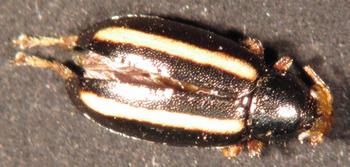
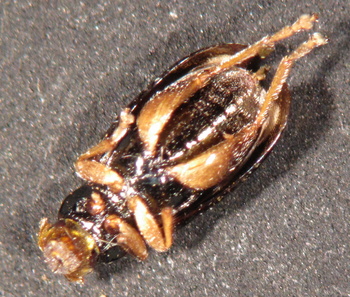
This beetle is black with two longitudinal yellow stripes down its dorsal side. It has wings and extended back legs for jumping. The mouth part is a golden color, similar to its legs. It also has reddish colored eyes. The beetle’s wings extend pass its abdomen slightly. The beetle also has very small antennae.
Unidentified Beetle No. 2:
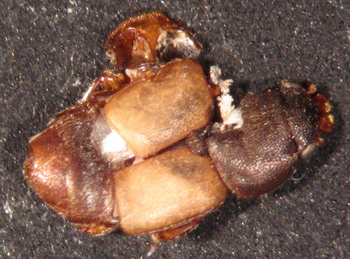
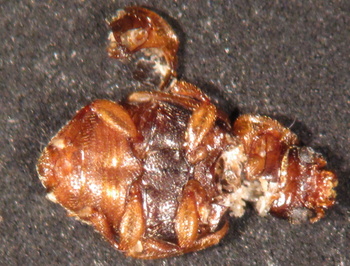
This beetle’s body has been flattened in the bag or during cleaning. It is brown with lighter brown wings. The wings do not expand past its thorax. The beetle’s legs are short. The thorax and the abdomen form a pentagonal shape. The eyes are a dark brown color.
Lacewing Fly:
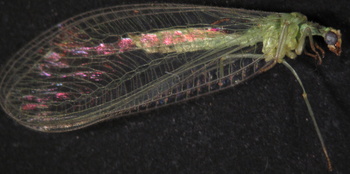
This lacewing fly has different characteristics in the abdomen than the previous one I posted. I suspect that the insects are different genders, based on the different abdomen shapes, but I was unable to find anything on sexing lacewing flies.
Spider:

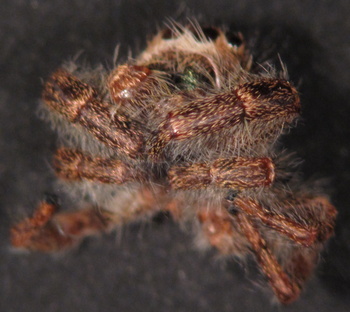
I suspect this spider to be a type of jumping spider due to the body and leg shapes and the fact that it has eight eyes. The four smaller eyes can be seen on the back of the head and this gives the spider more accurate vision and a wider range of sight. The spider’s head has a square shape with four eyes in the front and two eyes on each side. They are very hard to see, but there is a slight reflection of light where the other four eyes are located.
Syrphid Fly Pupa Case:

This is a hard, transparent shell of either a larva or a maggot that I could not identify. Stuart suspects that it is from a Syrphid fly pupa. The piece sitting next to it was broken off when I was moving the specimen with the forceps.
Spider Web Cluster:
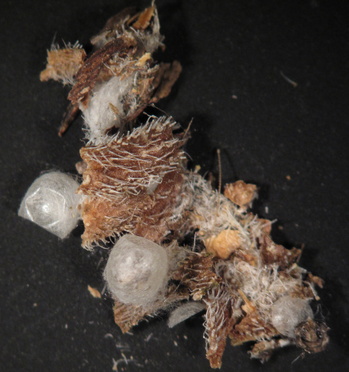
This is a cluster of web and egg sacs that we have found in the Echinacea plant material. We tend to find a lot of web and egg sacs when cleaning Echinacea heads.

Leave a Reply